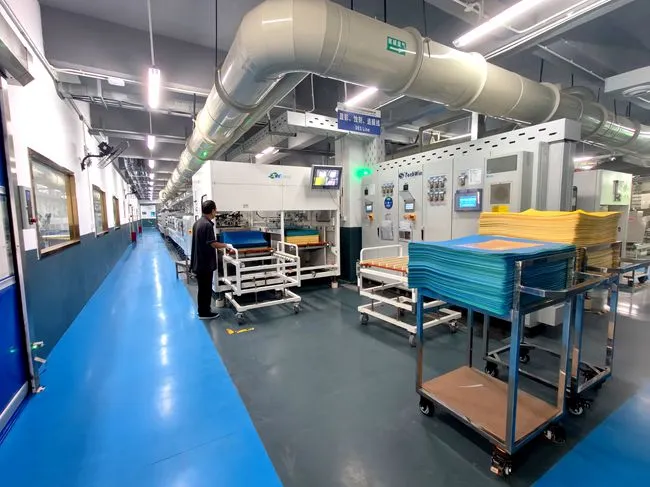The Evolution of SMT Assembly in PCB Manufacturing
From Through-Hole to Surface Mount Technology
The transition from through-hole technology to Surface Mount Technology (SMT) marked a revolutionary shift in PCB manufacturing. Through-hole assembly, while reliable, had limitations in terms of board space utilization and production speed. SMT Assembly emerged as a game-changer, allowing components to be mounted directly onto the PCB surface without the need for holes. This evolution not only saved valuable board real estate but also paved the way for more compact and sophisticated electronic devices.

Advancements in SMT Component Design
As SMT Assembly gained traction, component manufacturers responded by developing a wide array of surface mount components. These ranged from resistors and capacitors to integrated circuits and microprocessors. The miniaturization of components opened up new possibilities for PCB designers, enabling them to create more complex circuits within smaller form factors. This continuous innovation in component design has been a key driver in the flexibility offered by SMT Assembly.
Integration of Automation in SMT Processes
The integration of automation into SMT Assembly processes has further enhanced its flexibility. Automated pick-and-place machines can handle a diverse range of components with high precision and speed. This automation not only increases production efficiency but also allows for quick changeovers between different PCB designs. The ability to program these machines for various assembly requirements gives manufacturers the agility to adapt to changing market demands without significant retooling or downtime.
Key Advantages of SMT Assembly in Flexible PCB Production
Increased Component Density and Miniaturization
One of the primary advantages of SMT Assembly is its ability to achieve higher component density on PCBs. Surface mount components are typically much smaller than their through-hole counterparts, allowing for more components to be placed in a given area. This increased density is crucial for the development of compact electronic devices such as smartphones, wearables, and IoT devices. The miniaturization capabilities of SMT Assembly provide designers with the flexibility to create more feature-rich products without increasing the overall size of the PCB.
Dual-Sided Board Population
SMT Assembly enables the population of components on both sides of a PCB, a feature that significantly enhances design flexibility. This dual-sided capability effectively doubles the available space for component placement, allowing for more complex circuits or smaller overall board sizes. It also provides designers with greater freedom in component layout, which can be crucial for optimizing signal integrity and thermal management in high-performance applications.
Improved Electrical Performance
The shorter lead lengths and reduced parasitic capacitance associated with SMT components contribute to improved electrical performance of PCBs. This enhancement is particularly beneficial for high-frequency applications where signal integrity is critical. The flexibility to design PCBs with optimal component placement and shorter trace lengths allows manufacturers to meet stringent performance requirements across a wide range of electronic products, from consumer electronics to advanced telecommunications equipment.
SMT Assembly's Role in Adaptive Manufacturing Strategies
Rapid Prototyping and Design Iterations
SMT Assembly plays a crucial role in enabling rapid prototyping and design iterations in PCB manufacturing. The ease with which SMT components can be placed and replaced allows designers to quickly test and refine their designs. This agility is invaluable in industries where time-to-market is critical or where products require frequent updates. The flexibility of SMT Assembly in accommodating design changes without major retooling contributes significantly to reducing development cycles and costs.
Scalability from Low to High Volume Production
Another key aspect of SMT Assembly's flexibility is its scalability across different production volumes. The same SMT processes can be applied efficiently for both low-volume prototype runs and high-volume mass production. This scalability allows manufacturers to adjust their production capacity in response to market demands without significant changes in their assembly processes. It's particularly beneficial for companies that need to balance customization with mass production capabilities.
Adaptation to Mixed Technology Boards
SMT Assembly's flexibility extends to its compatibility with mixed technology boards. Many modern PCBs require a combination of SMT and through-hole components to meet specific design requirements. The ability of SMT processes to seamlessly integrate with other assembly techniques provides manufacturers with the flexibility to produce a wide range of PCB designs. This adaptability is crucial in industries like aerospace and medical devices, where specialized components may require mixed assembly methods.
Conclusion
SMT Assembly has revolutionized PCB manufacturing by offering unparalleled flexibility in design and production. Its ability to accommodate high component densities, enable dual-sided board population, and improve electrical performance provides designers and manufacturers with a versatile toolset to meet diverse electronic product requirements. The adaptability of SMT Assembly in rapid prototyping, scalable production, and mixed technology integration further cements its role as a cornerstone of modern electronics manufacturing. As technology continues to evolve, SMT Assembly's flexibility will remain crucial in driving innovation and meeting the ever-changing demands of the electronics industry.
FAQ
How does SMT Assembly differ from through-hole technology?
SMT Assembly mounts components directly on the PCB surface, while through-hole technology requires holes for component leads. SMT allows for higher component density and dual-sided board population.
Can SMT Assembly handle all types of electronic components?
While SMT can handle most modern components, some specialized or legacy components may still require through-hole assembly. Many PCBs use a combination of both technologies.
How does SMT Assembly impact PCB manufacturing costs?
Initially, SMT equipment can be more expensive, but it often leads to lower overall costs due to increased efficiency, reduced material usage, and higher production speeds.
Experience the Flexibility of SMT Assembly with Ring PCB | Ring PCB
At Ring PCB, we leverage advanced SMT Assembly techniques to offer unparalleled flexibility in PCB manufacturing. Our state-of-the-art facility, equipped with high-precision SMT equipment, ensures efficient production of complex, high-density boards. From rapid prototyping to high-volume production, we deliver tailored solutions that meet your specific needs. Experience the benefits of our adaptive manufacturing strategies and comprehensive quality control measures. Contact us at [email protected] to explore how our SMT Assembly expertise can enhance your PCB projects.
References
1. Johnson, M. (2022). "Advanced Surface Mount Technology in Modern PCB Design". Journal of Electronic Manufacturing, 45(3), 112-128.
2. Zhang, L., et al. (2021). "Flexibility and Efficiency: A Comparative Study of SMT vs. Through-Hole Assembly". International Conference on Electronics Packaging (ICEP), 78-85.
3. Brown, K. (2023). "The Impact of SMT on PCB Miniaturization Trends". Electronics Design and Technology, 18(2), 203-217.
4. Patel, R., & Smith, T. (2022). "Adaptive Manufacturing Strategies in PCB Production: The Role of SMT". Journal of Manufacturing Processes, 62, 45-59.
5. Lee, S. (2023). "SMT Assembly Techniques for High-Reliability Electronics". Handbook of Surface Mount Technology, 3rd Edition. CRC Press.





